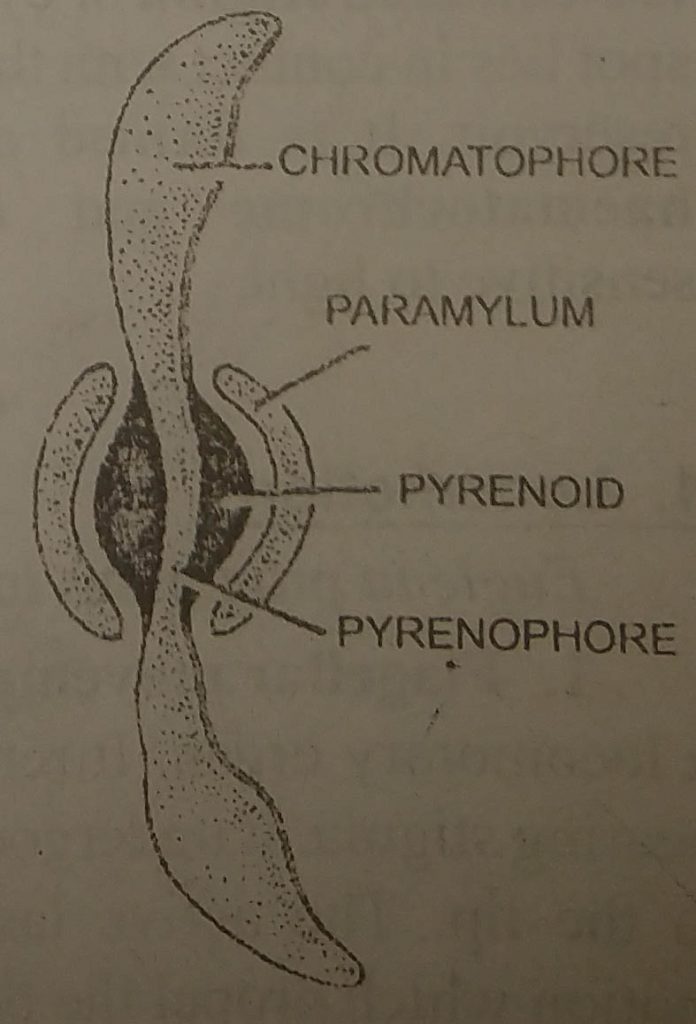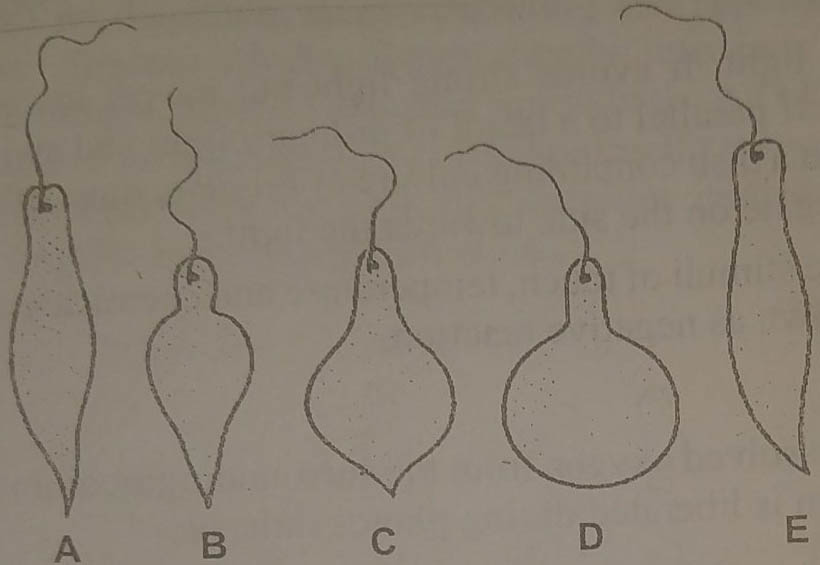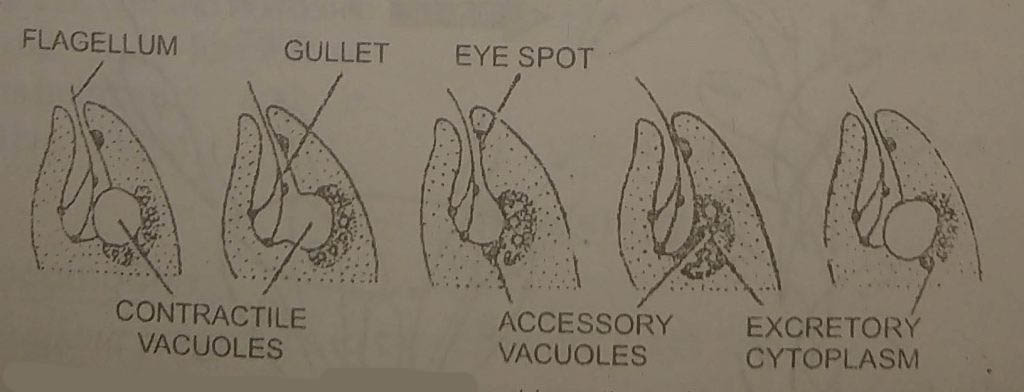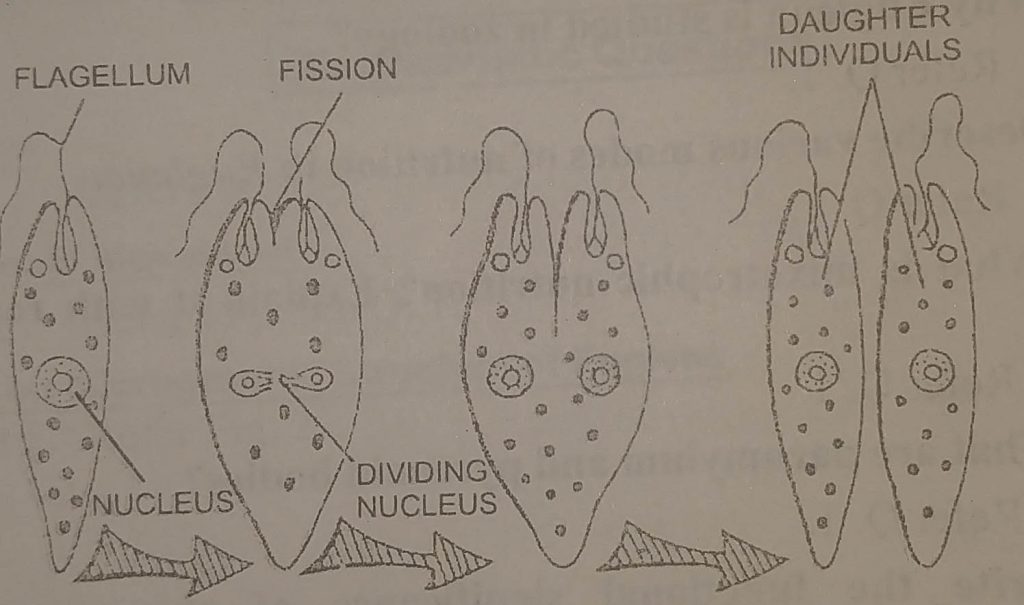BSc 1st Year Lower Non-chordates Euglena Sample Model Practice Question Answer Papers
BSc 1st Year Lower Non-chordates Euglena Sample Model Practice Question Answer Papers: BSc is a three-year program in most universities. Some of the universities also offer BSc Honours. After getting enrolled for BSc, there are certain things you require the most to get better grades/marks in BSc. Out of those, there are BSc Study Material, BSc Sample Model Practice Mock Question Answer Papers along with BSc Previous Year Papers. At gurujistudy.com you can easily get all these study materials and notes for free. Here in this post, we are happy to provide you BSc 1st Year Lower Non-chordates Euglena Sample Model Practice Question Answer Papers.

BSc 1st Year Lower Non-chordates Euglena Sample Model Practice Question Answer Papers
Q.1. Give an account of the structure, nutrition, and reproduction of Euglena.
Discuss nutrition in Euglena. Distinguish its mode of nutrition with Paramecium. Discuss its position in the plant kingdom.
Ans.1. Habit and Habitat
Euglena is free-living and solitary. It occurs in the stagnant water of ponds. pools and ditches with decaying nitrogenous organic matter. During the rainy season it is so abundant that it imparts green colour to the water.
External Structure
1. Shape and size: The body is fusiform or spindle-shaped with blunt anterior and pointed posterior end. The size is microscopic varying from 53-100 u.

2. Anterior end: The blunt anterior end of the body has a funnel shaped depression. It represents reservoir or glagellar sac. Its openings is called cytoplasm. It leads into a sphericle reservoir through a short tube, the cyotpharynx or gullet.
3. Flagella: A long thread-like flagellum arises from the base of reservoir and projects out of cytostome. A small flagellum remains within the reservoir. The two flagella arise from two tiny granules, the kinatosomes or blephreoplasts lying at the base of the reservoir. The long flagellum has a lateral swelling at its base within the reservoir. It is called the paraflagellar body. It acts as a photoreceptor, and contains lactoflavin as sensitiser.
4. Pellicle: The body is enclosed in a tough but flexible pellicle or periplast. Its electron microscopic structure reveals that pellicle consists of helically arranged thin and elastic strips. These fuse at both the ends of the body. Each strip has a ridge and a groove. The ridge ofone strip fits into the groove of adjacent strip. Under higher magnification these articulating edges appear as striations and are called myonemes.

Under the pellicle, parallel to its strips are present mucus-secreting muciferous bodies and bundles of microtubules.
Internal Structure
1. Cytoplasm
The cytoplasm is distinguished into :
(a) an outer thin, clear layer of ectoplasm,
(b) an inner granular and more fluid-like central mass of endoplasm. Oblique and longitudinal myonemes extend in the ectoplasm.
2. Cytoplasmic Inclusions
1. Nucleus: It is a large oval or spherical vesicular body. It lies in the broad posterior part of the body.

2. Chromatophores: Inside the cytoplasm of Euglena are found large number of oval, disc-like, plate-like or rod-like chromatophores or chloroplasts. They possess chlorophyll a and b and help in the synthesis or food. Their number, shape, size and distribution varies in different species of Euglena. In E. viridis these are rod-like and radiate from a common centre form star-shaped arrangement. Each consists of a central, non-pigmented part, the pyrenophore, surrounded by one or two proteinous oval or biconyex pyrenoid bodies, which might be enveloped by paramylon sheath.
3. Paramylon bodies: The reserve carbohyrate occurs in the form retractile bodies of paramylon starch. It is a pholysaccharide (B-1, 3 glucon ).

4. Contractile vacuole: A large contractile vacuole lies on one side of the reservoir. It is surrounded by several minute accessory contractile vacuoles. These discharge theircontents into the contractile vacuole which in turn bursts into the reservoir liberating its watery contents.
5. Stigma or eye spot : An orange or red-coloured stigma or eye spot lies in contact with the reservoir.
Physiology
1. Locomotion
Euglena progresses in two different ways:
1. Flagellar movement: The long highly contractile flagellum acts as a locomotory organ. It remains directed oblique backwards towards the side bearing stigma. It undergoes spiral undulations which are passed from the base to the tip. The active lashing movements of flagellum produce waves motion which propel the body forward with a spiral rotation or gyration along the axis.
2. Euglenoid movements: The pellicle being flexible permits the organism to perform worm-like wriggling movements of the body. A peristaltic expansion passes along the entire length of the body from the anterior to the posterior end and the animal progresses very slowly. This is known as euglenoid movement.

Euglena during exhibits mixotrophic type of nutrition as it flagellar movement. feeds in more than one ways:
1. Holophytic or autotrophic nutrition (Plant-like): In bright sunlight Euglena synthesises its food from CO2 and water with the aid of chlorophyll (photosynthesis as found in plants). The synthesised food is a

variety of starch, the paramylum, which stored in the pyrenoid bodies or is found scattered as paramylum bodies.
2. Saprozoic nutrition or saprophytic nutrition : In the absence sunlight Euglena absorbs decaying organic matter by the general body surface Euglena secretes certain digestive enzymes which are typically animal-like.
3. Holozoic nutrition : Some species of Euglena are recorded to feed on solid food particles but its occurrence is doubtful.
3. Behaviour
Euglena is sensitive to light. It avoids strong light but moves towards moderate light. It orients itself parallel to a beam of ordinary light and swims towards the source of light. In a dish containing culture of Euglena most of the individuals are seen to aggregate on the side towards the light.
Euglena also reacts to the stimuli of touch, temperature and chemicals and tries to escape away.
4. Respiration
It is aerobic. It absorbs dissolved oxygen from the surrounding medium by diffusion. In day-time, oxygen is liberated during photosynthesis.
5. Excretion
During day-time CO2 produced during respiration is used in photosynthesis. Unused CO2 escapes out by diffusion through body surface. Nitrogenous wastes also escape the same way.
6. Osmoregulation
In Euglena excess of water is eliminatedout by the contractile vacuole. The accessory vacuoles collect excess of water from the endoplasm and release their contentsin the main vacuole which gradually increases in size and finally contracts to force the fluid into the reservoir. From it the fluid escapes through the gullet.

Reproduction
1. Longitudinal binary fission: Under favourable conditions, Euglena reproduces by longitudinal binary fission. The nucleus divides longitudinally into two with the duplication of cytopharynx, reservoir, eyespot, blepheroplasts and contractile vacuole. A constriction arises at the anterior end and passes backwards resulting in longitudinal splitting of the body.
2. Multiple fission and palmella stage: To tide over the unfavourable conditions Euglena secretes a gelatinous cyst around its body. In the encysted condition, Euglena divides longitudinally into two but these may divide further forming 4, 16 or 32 daughter individuals. All of them remain entangled in a common cyst forming the so called palmella stage.

3. Encystment: Under unfavourable environmental conditions, Euglena secretes a thick, spherical, yellowish-brown cyst formed of a special carbohydrate. The cyst assists to tide over the adverse conditions and in the dispersal of organism. On the commencement of desirable conditions the cyst ruptures and the animal starts an active free life.

Position of Euglena
The position of Euglena is still a debatable question as it is considered an animal by zoologists and a plant by botanists. Its inclusion in the kingdom. Animalia is based on the following facts :
1. The proteinous nature of the pellicle and the absence of cellulose covering over the body.
2. Presence of contractile vacuole.
3. Presence of photosensitive stigma or eyespot.
4. Saprophytic and even holozoic modes of nutrition among some species of Euglena. (BSc 1st Year Lower Non-chordates Euglena Sample Model Practice Question Answer Papers)
5. Movement from place to place.
6. Longitudinal division of the body.
BSc 1st Year Lower Non-chordates Euglena Sample Model Practice Question Answer Papers
BSc 1st Year Lower Non-chordates Euglena Sample Model Practice Question Answer Papers
BSc 1st Year Sample Model Practice Mock Test Question Answer Papers